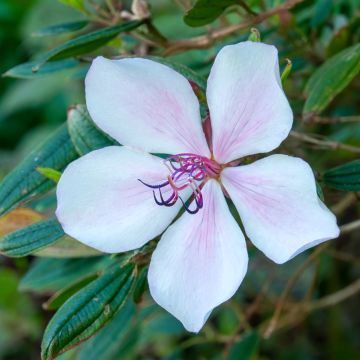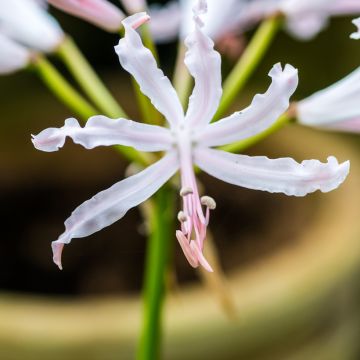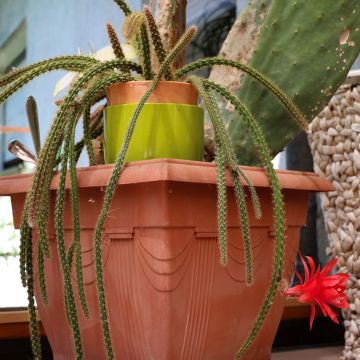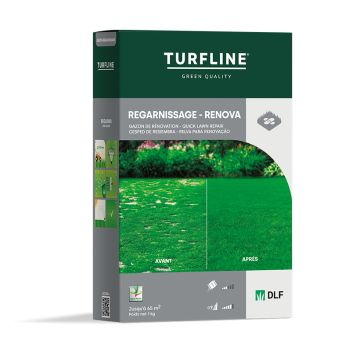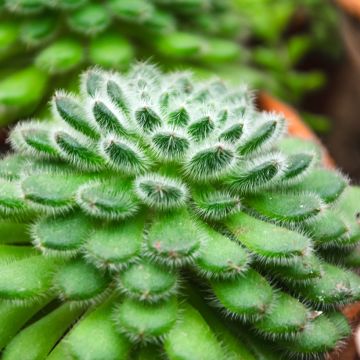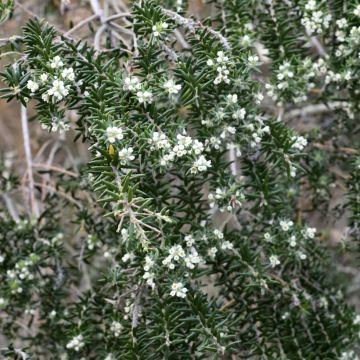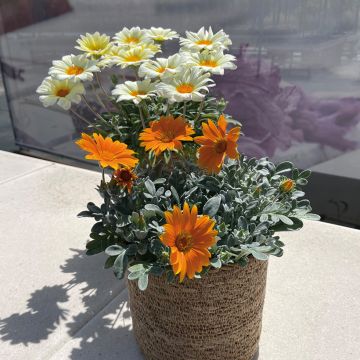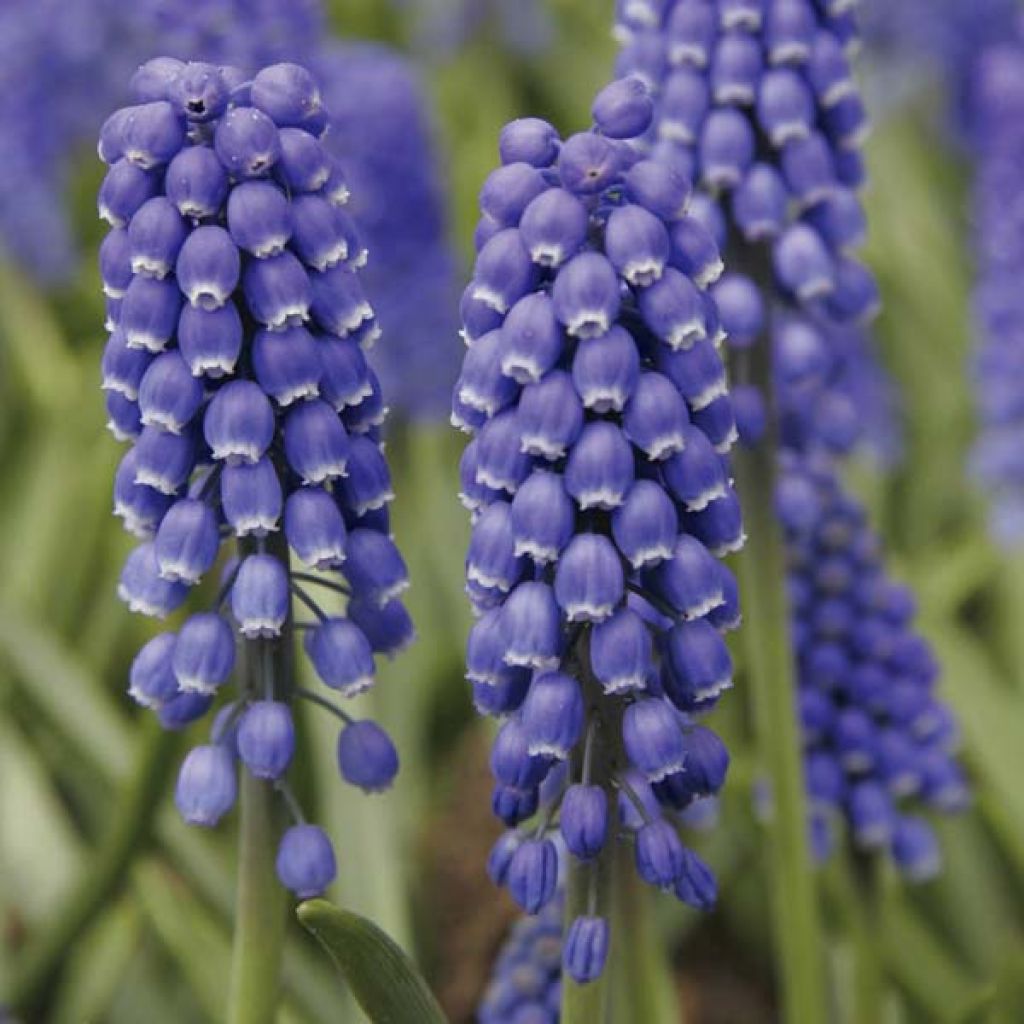

Muscari Armeniacum Big Smile
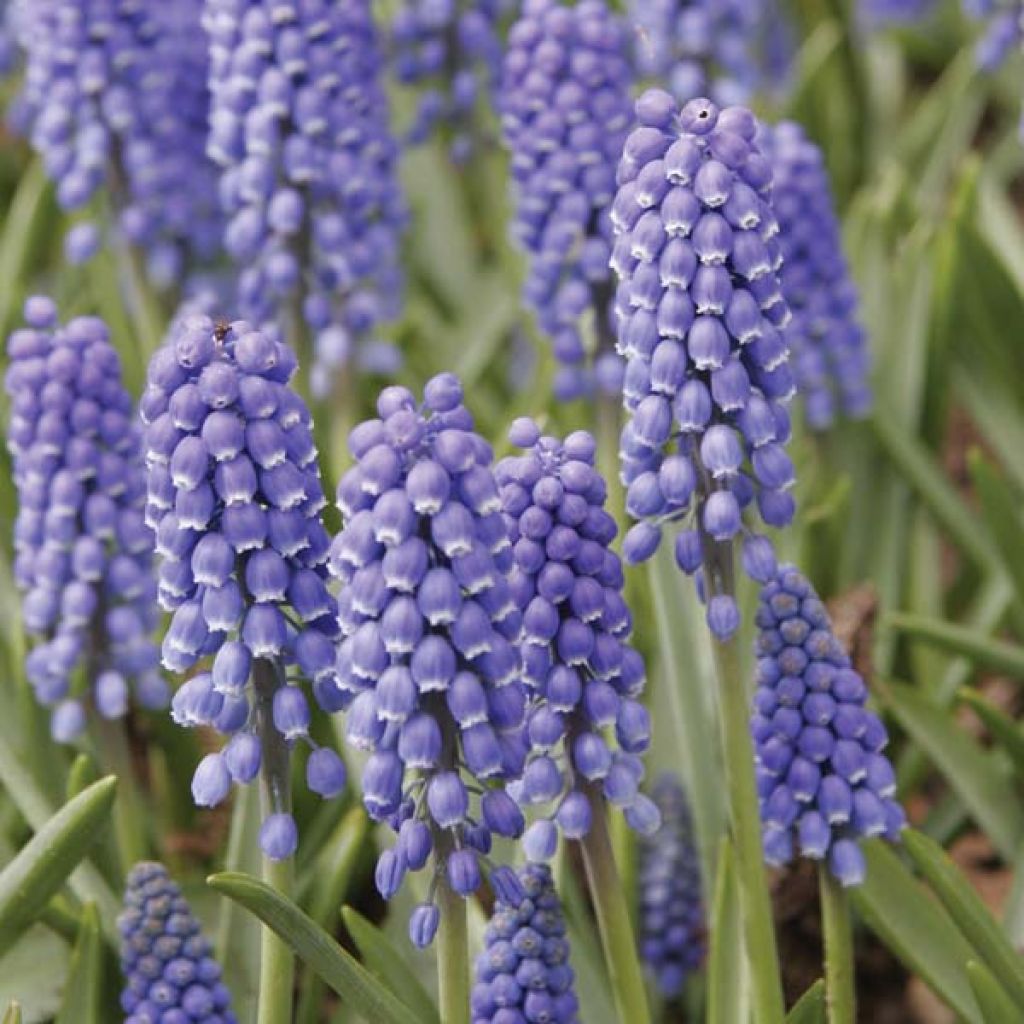

Muscari Armeniacum Big Smile
Muscari Big Smile
Muscari armeniacum Big Smile
Armenian Grape Hyacinth, Blue Bottle
Why not try an alternative variety in stock?
View all →This plant carries a 6 months recovery warranty
More information
We guarantee the quality of our plants for a full growing cycle, and will replace at our expense any plant that fails to recover under normal climatic and planting conditions.
From €7.90 for pickup delivery and €6.90 for home delivery
Express home delivery from €8.90.

Does this plant fit my garden?
Set up your Plantfit profile →
Description
Muscari armeniacum Big Smile, so named because of its tall stature and long clusters of small trailing flowers, shaped like bright blue, bells edged with white, is a relatively unknown, recent variety. A very pleasant muscari displaying its radiant flowers in the heart of spring carried well above its bright green linear foliage. This hardy, vigorous and prolific bulb will thrive in sunny or semi-shaded exposure and well-drained soil. As it naturalises easily, it is perfect for quickly creating beautiful blue waves in borders, rockeries, and flowering pots...
Muscari armeniacum, sometimes called Armenian grape hyacinth, is a plant of the asparagus family. This small bulbous plant is native to the mountains of southeastern Europe, Armenia, Turkey, and the Caucasus, where it endures severe frosts. 'Big Smile' is a taller form of this species, producing a cluster 15 cm (6in) high instead of the usual 10. The plant forms a basal rosette of long, very narrow, gutter-shaped, light and vibrant green leaves. It will usually flower in April, a little earlier or later depending on the exposure and climate. Each rosette produces 2 to 3 flower stalks on a mature and well-developed bulb. The 15 to 20 cm (6 to 8in) tall flower stalks bear countless small trailing flowers, shaped like urns, medium blue to linen blue with white at their tips. They are fragrant and tightly clustered.
While Muscari is usually a rather unassuming plant, 'Big Smile' has a unique personality that stands out in spring. It is versatile and useful in the garden or for houses without gardens. Its great resistance to cold, drought, and shade allows it to be used in many situations: in the understory, at the base of trees, along borders to emphasize the design of a path and in rockeries or Japanese-style gardens. It also grows well in pots, on a window or balcony. It is so accommodating that it forgives forgotten watering, and thrives in neglected or weekend gardens. Its blue flowers are very beautiful alongside the yellow trumpets of daffodils or the double cups of 'Foxtrot' tulips whose colour varies from pink to white throughout the day. The bulbs of Muscari armeniacum 'Big Smile' are also easy to force for beautiful winter flowers in the house.
Plant habit
Flowering
Foliage
Botanical data
Muscari
armeniacum
Big Smile
Hyacinthaceae
Armenian Grape Hyacinth, Blue Bottle
Cultivar or hybrid
Planting and care
Plant your muscari as soon as possible in a well-drained, well-loosened soil at a depth of 8 cm (3in) (Bulbs should be covered with twice their height of soil). Space the bulbs 8 cm (3in) apart, making sure they don't touch. Choose a sunny exposure for better flowering. Muscari armeniacum is undemanding in terms of soil type and perfectly hardy in all regions. Divide the bulbs every 4 years at most. If you are growing it in pots, make sure to water it regularly and feed at the end of flowering so that the bulb can replenish its reserves.
Advice for Flowering Carpets:
You can create beautiful flowered spaces around the house, in flower beds, around trees, or in wild spaces. It is an economical and sustainable solution, provided you respect a few principles:
1) This planting should be left in place.
2) Choose the correct varieties for the situation.
3) A period of rest is essential after flowering for the bulbs to replenish. Let the foliage turn yellow and dry before cutting it.
4) Organic fertiliser should be applied once a year in autumn.
Planting period
Intended location
Care
-
, onOrder confirmed
Reply from on Promesse de fleurs
Haven't found what you were looking for?
Hardiness is the lowest winter temperature a plant can endure without suffering serious damage or even dying. However, hardiness is affected by location (a sheltered area, such as a patio), protection (winter cover) and soil type (hardiness is improved by well-drained soil).

Photo Sharing Terms & Conditions
In order to encourage gardeners to interact and share their experiences, Promesse de fleurs offers various media enabling content to be uploaded onto its Site - in particular via the ‘Photo sharing’ module.
The User agrees to refrain from:
- Posting any content that is illegal, prejudicial, insulting, racist, inciteful to hatred, revisionist, contrary to public decency, that infringes on privacy or on the privacy rights of third parties, in particular the publicity rights of persons and goods, intellectual property rights, or the right to privacy.
- Submitting content on behalf of a third party;
- Impersonate the identity of a third party and/or publish any personal information about a third party;
In general, the User undertakes to refrain from any unethical behaviour.
All Content (in particular text, comments, files, images, photos, videos, creative works, etc.), which may be subject to property or intellectual property rights, image or other private rights, shall remain the property of the User, subject to the limited rights granted by the terms of the licence granted by Promesse de fleurs as stated below. Users are at liberty to publish or not to publish such Content on the Site, notably via the ‘Photo Sharing’ facility, and accept that this Content shall be made public and freely accessible, notably on the Internet.
Users further acknowledge, undertake to have ,and guarantee that they hold all necessary rights and permissions to publish such material on the Site, in particular with regard to the legislation in force pertaining to any privacy, property, intellectual property, image, or contractual rights, or rights of any other nature. By publishing such Content on the Site, Users acknowledge accepting full liability as publishers of the Content within the meaning of the law, and grant Promesse de fleurs, free of charge, an inclusive, worldwide licence for the said Content for the entire duration of its publication, including all reproduction, representation, up/downloading, displaying, performing, transmission, and storage rights.
Users also grant permission for their name to be linked to the Content and accept that this link may not always be made available.
By engaging in posting material, Users consent to their Content becoming automatically accessible on the Internet, in particular on other sites and/or blogs and/or web pages of the Promesse de fleurs site, including in particular social pages and the Promesse de fleurs catalogue.
Users may secure the removal of entrusted content free of charge by issuing a simple request via our contact form.


































